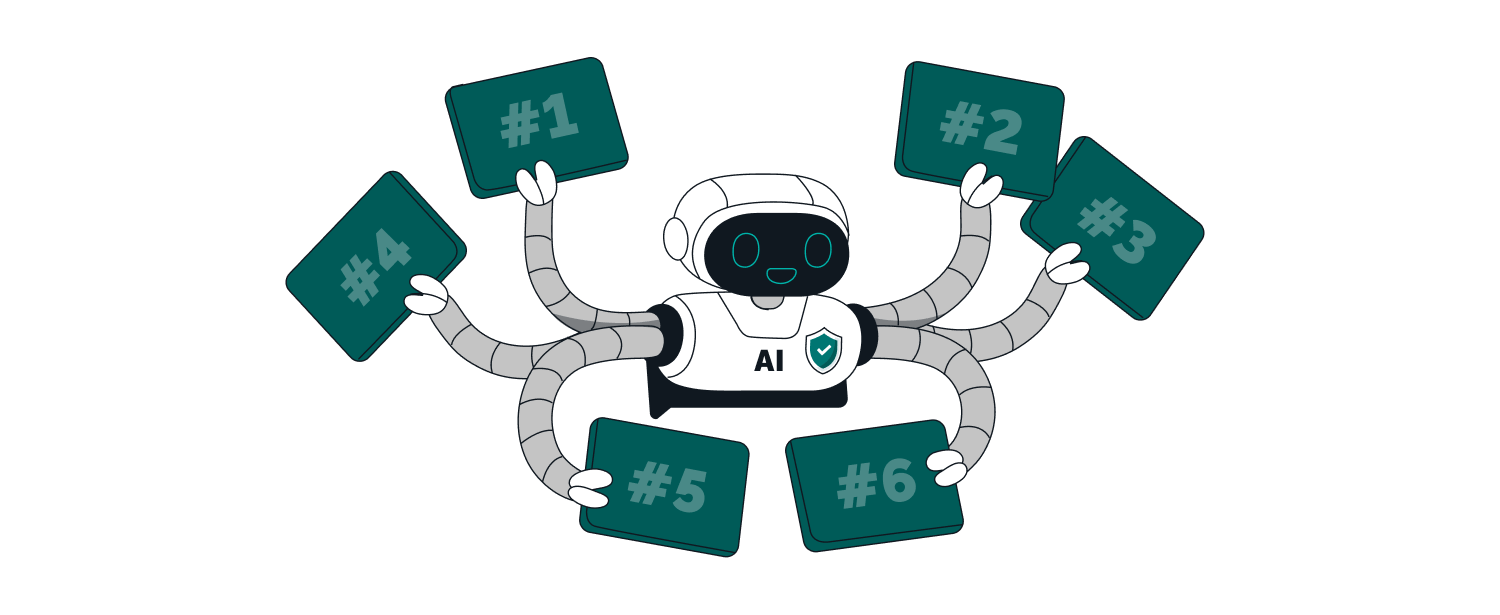Did you know that the first stock ticker was invented in 1867, and it was so slow that traders would often miss significant price movements? Fast forward to today, and integrating AI with your day trading platform can give you a serious edge in real-time analysis and trading execution. In this article, we explore how to connect AI tools to your trading platform, identify the best AI solutions, and leverage algorithms for market analysis. You'll learn to set up AI trading bots, backtest models, and automate trade execution while understanding the risks and challenges involved. Plus, we'll discuss how to optimize AI performance and ensure alignment with your trading strategy, all while navigating legal considerations. Join us as we dive into the future of trading with DayTradingBusiness!
How do I connect AI tools to my trading platform?
Connect AI tools to your trading platform by using APIs provided by the AI software. Enable API access in your trading platform settings, then input the AI tool’s API key or credentials. Many platforms support plugins or third-party integrations—install these if available. Alternatively, use custom scripting or automation tools like Python with libraries such as REST or WebSocket to link AI models directly. Ensure your AI tool is configured to analyze market data and send trading signals or orders through the platform’s API. Test the connection with small trades before full deployment.
What are the best AI solutions for day trading?
Use AI-powered trading bots like Trade Ideas or TrendSpider for real-time analysis. Integrate machine learning algorithms such as QuantConnect or Alpaca to develop custom trading models. Leverage sentiment analysis tools like Accern or StockPulse to gauge market mood. Connect APIs from platforms like MetaTrader or Interactive Brokers to automate AI-driven trades. Ensure your platform supports data feeds and has compatibility for AI integration for seamless operation.
How can I use AI to analyze market data?
Integrate AI into your day trading platform by using AI-powered tools for real-time market analysis, such as machine learning models that identify patterns and predict price movements. Connect APIs from AI analytics providers to your trading software to automate data processing. Use natural language processing (NLP) to analyze news and social media sentiment impacting stocks. Implement AI algorithms to generate trade signals based on historical and live market data. Regularly update and train your AI models with new market information to improve accuracy.
What algorithms are effective for AI-driven trading?
Effective algorithms for AI-driven trading include machine learning models like neural networks, decision trees, and support vector machines. Reinforcement learning is also popular for adapting strategies in real-time. Time series forecasting models such as ARIMA or LSTM help predict market trends. Combining these with natural language processing (NLP) for news analysis boosts decision-making. Use these algorithms to analyze historical data, identify patterns, and execute trades automatically on your platform.
How do I set up an AI trading bot?
Connect your trading platform's API to the AI trading bot software. Configure the bot with your trading strategies, risk parameters, and asset preferences. Use a programming language like Python or a dedicated trading bot platform that supports AI integration. Test the bot in a demo environment before deploying live. Ensure your AI model is trained on relevant market data for accurate predictions. Monitor its performance regularly and adjust settings as needed.
What software do I need to integrate AI with my platform?
You need an AI API like OpenAI, TensorFlow, or PyTorch for integration. Use a trading-specific AI tool or library that supports real-time data analysis, such as Alpha Vantage or QuantConnect. Incorporate machine learning models through SDKs or APIs that suit your platform’s language, like Python or JavaScript. Ensure your platform can handle API calls and data streaming for live trading signals.
How can AI help with predicting stock movements?

AI can analyze historical data, identify patterns, and predict short-term stock movements. Integrate AI models that use machine learning algorithms to process real-time market data, news, and social sentiment. Use AI-powered tools to generate trading signals, automate buy/sell decisions, and improve timing. Connect AI with your platform via APIs or custom plugins to get instant insights and optimize your day trading strategies.
What are common challenges when integrating AI into trading?
Common challenges include data quality issues, latency problems affecting real-time decisions, overfitting models that don’t generalize well, integrating AI tools with existing trading platforms, and managing the unpredictable nature of markets. Ensuring reliable, clean data and seamless platform integration are key hurdles.
How do I ensure AI decisions align with my trading strategy?
To ensure AI decisions match your trading strategy, customize the AI algorithms with your specific rules and risk parameters. Regularly backtest AI outputs against historical data to verify they follow your strategy. Monitor AI performance in real-time, adjusting settings as needed. Incorporate your trading signals and set clear thresholds for AI actions. Use AI tools that allow manual override, so you stay in control. Continuously refine the AI based on market changes and your evolving strategy.
What are the risks of using AI in day trading?

Using AI in day trading risks overfitting the model to past data, leading to poor future predictions. It can generate false signals, causing costly trades. AI systems might lack adaptability to sudden market shifts or black swan events. Relying too heavily on AI can diminish human judgment and intuition, increasing exposure to unexpected losses. Technical failures or errors in AI algorithms can also cause significant financial setbacks.
Learn about What Are the Risks of Using Prop Firms in Day Trading?
How can I optimize AI performance for trading?
Connect your AI tools via APIs or plugins to your trading platform, ensuring real-time data flow. Use high-quality, clean data for training your AI models to improve accuracy. Incorporate machine learning algorithms that adapt to market patterns and adjust strategies dynamically. Automate trade execution based on AI predictions to reduce delays. Regularly backtest and refine your AI models with historical data. Monitor AI performance continuously and tweak parameters for better decision-making. Ensure your platform supports seamless integration and real-time analytics for optimal AI-driven trading.
What data is required for AI to trade effectively?
You need historical market data, real-time price feeds, order book data, and technical indicators. Include news sentiment, economic calendars, and relevant social media data to enhance AI decisions. Accurate, clean data improves AI's ability to identify patterns and execute trades effectively.
How do I backtest AI trading models?
Backtest AI trading models by applying historical market data to your AI algorithm. Use a trading simulation environment or backtesting software to run the model on past trades. Analyze performance metrics like profit factor, drawdown, and win rate. Adjust your model based on results and re-test until it performs consistently.
How can I automate trade execution with AI?
Integrate AI with your day trading platform by connecting it through APIs or custom plugins that analyze market data in real-time. Use AI-powered algorithms for pattern recognition, trend prediction, and risk management to generate buy or sell signals. Automate trade execution by linking these signals directly to your trading platform’s API, enabling instant order placement. Ensure your AI system continuously learns from new data to improve accuracy and adapt to market changes. Test the setup with paper trading before going live to avoid costly mistakes.
What security measures are needed for AI trading systems?

Use encryption for data transmission and storage, implement multi-factor authentication, and set access controls. Regularly update and patch AI software to fix vulnerabilities. Monitor AI decisions and flag suspicious activity. Limit API access and use secure, unique keys. Conduct periodic security audits and intrusion detection. Ensure compliance with financial regulations and data privacy laws.
How do I monitor and manage AI-driven trades?
Use APIs or built-in integrations to connect AI tools with your trading platform. Set up automated alerts and dashboards to track AI decision-making and trade performance. Regularly review AI-generated signals and compare them with actual trades. Adjust AI parameters based on market conditions and performance metrics. Implement risk management strategies like stop-loss orders to protect against AI errors. Keep software updated and stay informed about AI algorithm changes to ensure effective trade management.
Can AI adapt to changing market conditions?
Yes, AI can adapt to changing market conditions by using machine learning algorithms that analyze real-time data, recognize patterns, and adjust trading strategies accordingly.
How do I choose the right AI tools for my platform?
Identify your trading needs—are you looking for market analysis, automated trading, or risk management? Choose AI tools that specialize in those areas, like predictive analytics or algorithmic trading bots. Ensure the tools integrate smoothly with your existing platform through APIs or built-in features. Check for real-time data processing capabilities and user reviews. Test the tools with demo accounts before committing. Prioritize AI solutions that offer customization and support for your trading style.
What are the legal considerations for AI trading?
Legal considerations for AI trading include compliance with securities laws, avoiding market manipulation, ensuring transparency, and adhering to regulations set by financial authorities like the SEC or FCA. You must verify that your AI algorithms meet licensing requirements, prevent insider trading, and follow data privacy rules. Regular audits and clear documentation of AI decision processes help stay within legal boundaries.
Conclusion about How to Integrate AI with My Day Trading Platform?
Integrating AI with your day trading platform can significantly enhance your trading strategies and decision-making processes. By connecting the right AI tools, utilizing effective algorithms, and ensuring alignment with your overall trading strategy, you can optimize performance and adapt to market changes. However, it's crucial to address potential challenges, risks, and security measures to safeguard your investments. With the right approach and resources, AI can transform your trading experience. For in-depth guidance and support on leveraging AI in day trading, consider exploring the insights offered by DayTradingBusiness.
Sources:
- Gambling and online trading: emerging risks of real-time stock and ...
- Judgment day: Algorithmic trading around the Swiss franc cap removal
- Cryptocurrency trading, gambling and problem gambling ...
- An integrated model for electricity market coupling simulations ...
- Future of energy management systems in smart cities: A systematic ...